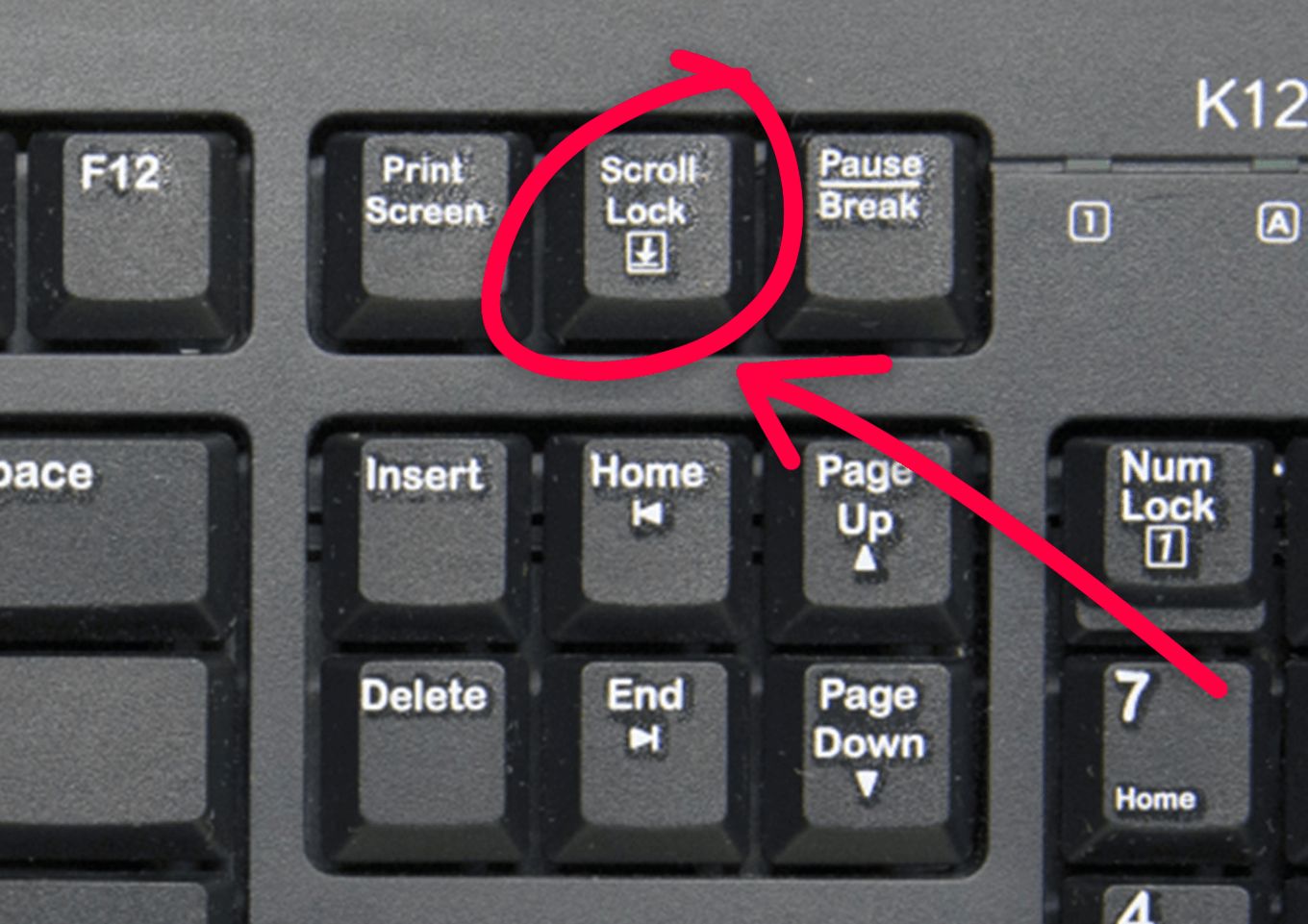Introduction
Welcome to the world of laptops, where convenience and mobility have become the norms of modern computing. Laptops are designed to be compact and portable, making them ideal for on-the-go usage. However, there may be situations where you need to disable the keyboard on your laptop. Whether you want to prevent accidental key presses, clean the keyboard without interference, or troubleshoot keyboard-related issues, disabling the keyboard can be a handy solution.
In this article, we will explore various methods to disable the keyboard on your laptop. These methods range from using built-in Windows tools to third-party software. Depending on your specific needs and capabilities, you can choose the most suitable option to achieve your objective.
It’s important to note that disabling the keyboard may require administrative privileges and should be performed with caution. Before proceeding, make sure to create a backup of your important files and settings. Additionally, remember that disabling the keyboard will render it unusable until reactivated.
Without further ado, let’s dive into the different methods you can use to disable the keyboard on your laptop.
Method 1: Using Device Manager
The Device Manager in Windows allows you to manage and control various hardware devices connected to your laptop, including the keyboard. By disabling the keyboard through Device Manager, you can temporarily or permanently prevent it from functioning. Here’s how:
- Open the Start menu and type “Device Manager” in the search bar. Click on the “Device Manager” app that appears in the search results.
- In the Device Manager window, expand the “Keyboards” category by clicking on the arrow beside it.
- Right-click on the keyboard device you want to disable. It is usually listed as “Standard PS/2 Keyboard” or “HID Keyboard Device.”
- Select “Disable” from the context menu. Confirm the action when prompted.
- The keyboard will now be disabled. To re-enable it, follow the same steps and choose “Enable” instead of “Disable.”
It’s important to note that disabling the keyboard through Device Manager is a temporary solution. If you restart your laptop, the keyboard will be enabled again. If you want a more permanent disabling option, consider using other methods discussed in this article.
This method is useful if you only need to disable the keyboard temporarily, such as during cleaning or to prevent accidental keystrokes. However, if you require a more robust and long-term solution, continue reading to explore other methods.
Method 2: Using Registry Editor
The Registry Editor is a powerful Windows tool that allows you to make changes to the system’s registry, which stores important settings and configurations. By modifying a specific registry key related to the keyboard, you can effectively disable it. Here’s how:
- Press the Windows key and type “Registry Editor” in the search bar. Click on the “Registry Editor” app that appears in the search results.
- In the Registry Editor window, navigate to the following path:
HKEY_LOCAL_MACHINE\SYSTEM\CurrentControlSet\Control\Keyboard Layout - Right-click on the “Keyboard Layout” folder and select “New” → “Binary Value”. Name the new value as “Scancode Map”.
- Double-click on the “Scancode Map” value and enter the following hexadecimal value:
00000000000000000300000000005CE000000000 - Click “OK” to save the changes and exit the Registry Editor.
Restart your laptop, and the keyboard will be disabled. If you want to enable the keyboard again, simply go back to the Registry Editor and delete the “Scancode Map” value you created earlier. Remember to proceed with caution while editing the registry, as improper changes can cause system instability.
Using the Registry Editor method offers a more permanent solution for disabling the keyboard. However, it’s essential to note that modifying the registry carries potential risks. Therefore, it is recommended to create a backup and exercise caution while making any changes.
Method 3: Using Group Policy Editor
If you’re using a Windows edition that includes Group Policy Editor (such as Windows 10 Pro), you can utilize this powerful tool to disable the keyboard on your laptop. Group Policy Editor allows you to manage various settings and configurations on a system-wide level. Here’s how you can disable the keyboard:
- Press the Windows key and type “Group Policy” in the search bar. Click on the “Edit group policy” app that appears in the search results.
- In the Group Policy Editor window, navigate to the following path:
Computer Configuration → Administrative Templates → System → Device Installation → Device Installation Restrictions - On the right-hand side, double-click on the “Prevent installation of devices not described by other policy settings” policy.
- Select the “Enabled” option and click “OK”.
Once you’ve enabled this policy, Windows will block the installation of any new devices, including the keyboard. This effectively disables the keyboard on your laptop. If you want to re-enable the keyboard, go back to the Group Policy Editor and set the policy to “Not Configured” or “Disabled”.
Using Group Policy Editor offers a more robust and permanent solution for disabling the keyboard. However, please note that this method is only available in certain editions of Windows, such as Windows 10 Pro. If you don’t have access to Group Policy Editor, consider exploring the other methods mentioned in this article.
Method 4: Using Third-party Software
If the built-in options discussed earlier are not sufficient for your needs or you require additional features and customization, you can consider using third-party software to disable the keyboard on your laptop. There are various software applications available that allow you to control and manage keyboard functionality. Here’s what you can do:
- Research and choose a reliable third-party software that specializes in keyboard management and control. Look for features such as keyboard disabling, re-enabling, scheduling, and customization options.
- Download and install the selected software on your laptop.
- Launch the software and navigate to the keyboard management section.
- Follow the software’s instructions to disable the keyboard. This process may vary depending on the specific software you choose. Most software applications provide a user-friendly interface and intuitive controls for easy management.
Using third-party software gives you more flexibility and control over disabling your laptop’s keyboard. These software applications often offer additional features, such as setting up schedules for automatic disabling and enabling of the keyboard, password protection, and more. However, it’s important to choose trusted and reputable software to ensure the safety and security of your system.
Before installing any third-party software, make sure to read reviews, check the software’s compatibility with your operating system, and only download from reliable sources. Additionally, keep in mind that some third-party software may require a fee for advanced features or customization options.
Remember, as with any software installation, exercise caution and consider creating a system backup before proceeding. This will allow you to restore your laptop’s settings in case of any unexpected issues.
Conclusion
Disabling the keyboard on your laptop can be a useful solution for various situations, such as preventing accidental keystrokes, cleaning the keyboard without interference, or troubleshooting keyboard-related issues. In this article, we explored four different methods to disable the keyboard on your laptop, each offering its own advantages and considerations.
Firstly, using the Device Manager allows you to temporarily disable the keyboard but is not a permanent solution. Secondly, modifying the registry through the Registry Editor provides a more permanent disabling option, but it requires caution and expertise in handling the registry. Thirdly, if you have access to the Group Policy Editor, you can enforce system-wide keyboard restrictions, ensuring a long-term disabling effect.
Lastly, for more advanced features and customization, third-party software can be an excellent choice. These software applications offer additional functionality, such as scheduling automatic keyboard disabling/enabling or password protection.
When considering any method, it’s crucial to exercise caution, create backups, and choose reputable software sources. Depending on your specific needs and capabilities, you can select the most suitable method to disable the keyboard on your laptop.
Remember that enabling the keyboard again is as important as disabling it. Whether you’re temporarily disabling the keyboard or implementing a permanent solution, make sure you know how to re-enable it whenever needed.
By carefully following the instructions provided in this article, you can confidently disable the keyboard on your laptop and carry out tasks without unwanted interruptions. Keep in mind that each method has its own implications and considerations, so choose the most appropriate option based on your requirements and expertise.

























